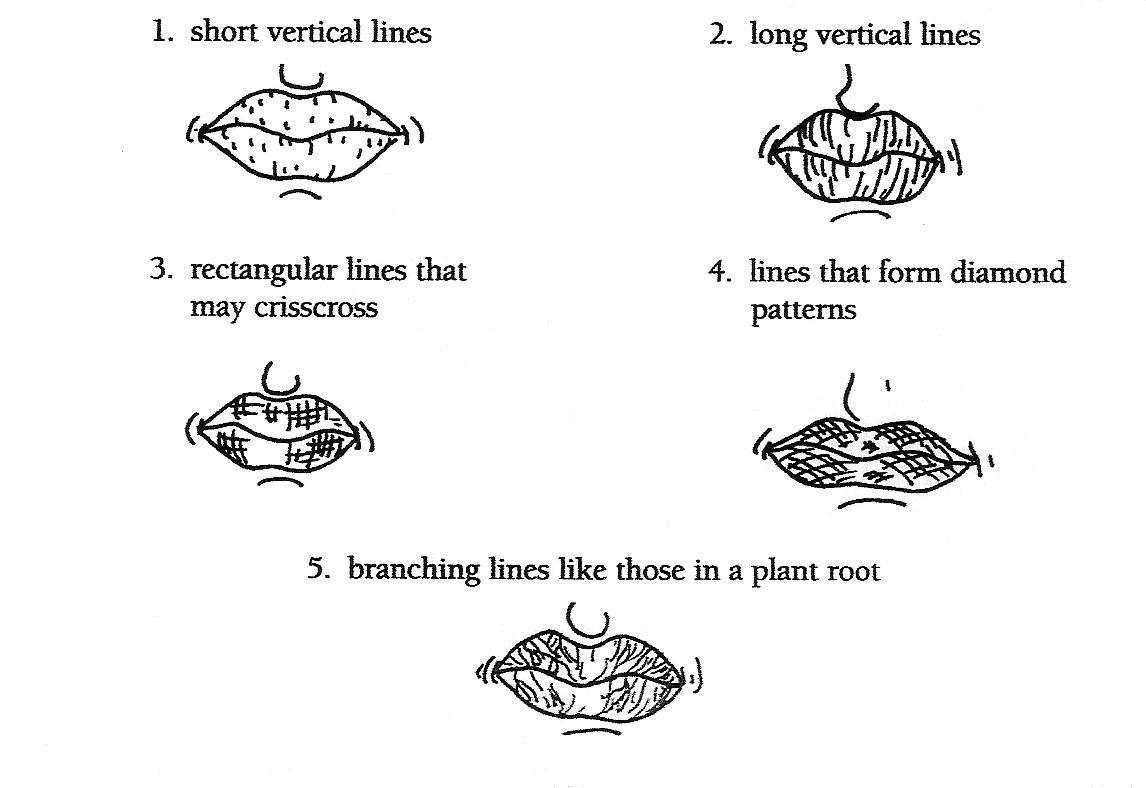THE CASE OF THE LIPSTICK LITTER
A businessman was hosting a dinner party for prospective clients in the private dining room of a local restaurant. A female guest returned from the Ladies Room to report that her wallet was missing from her handbag which she had placed on the countertop near the sink. She stated that she had heard someone enter the ladies room, spend about a minute there and then leave, possibly with her wallet.
Police entering the Ladies Room, found a tissue which had been used to blot lipstick on the same counter where the handbag had been. The victim remembered that the tissue was not there when she placed her handbag on the counter, as she had noticed how clean it was.
The host checked the guest list and everyone was still present. No one but guests had access to the rest rooms in the private dining room.
Police asked all of the female guests to reapply their lipstick and then blot it on a piece of paper. Compare the evidence with the lip prints of the guests. Who is possibly the guilty party?
SCIENTIFIC INFORMATION
Just like fingerprints, everyone has a characteristic pattern on their lips, and no two patterns are exactly alike. Therefore, lip prints are another means of identification.
Lip prints can be categorized into five different patterns. Most lips have parts of at least two different patterns. These patterns are illustrated below.

Acknowledgement: “Crime Scene Investigations” Pam Walker and Elaine Wood, The Center for Applied Research in Education, West Nyack, New York, 1998